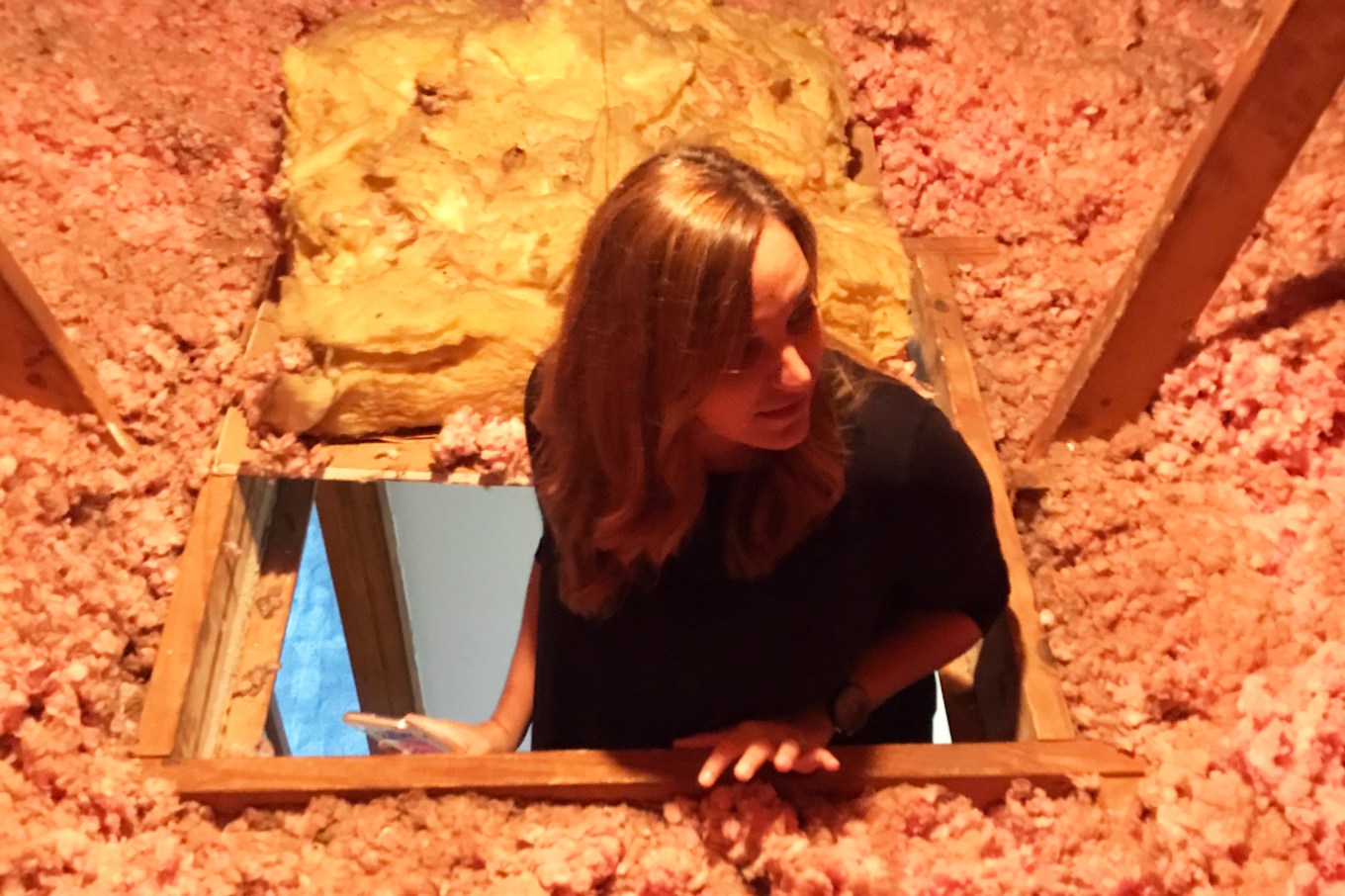You probably think of your ceilings as solid surfaces, but the truth is that ceilings leak air into unfinished attic spaces through gaps and openings, such as around pipes and lighting fixtures.
Air leaking into your attic could be costing you money — up to 30% of a home’s heating and cooling energy is lost due to air leaks. Here’s how to find and seal those leaks.
How to Find Air Leaks
From below your attic, check the ceilings and note the locations of all light fixtures, ceiling fans, and electrical outlets. From the attic-side of your ceiling, find the fixtures you noted. You’ll have to pull back existing insulation to find them.
Electrical connections for fixtures, fans, and outlets require a hole cutout in your ceiling drywall. Each of these cutouts is a likely air leak. You can stop air leaks by sealing the cutouts from above with acrylic latex or silicone caulk, or with low-expansion polyurethane foam, depending on the size of the gap.
Also check for anything that penetrates the ceiling:
- pipes
- vent stacks
- flues and chimneys
- electrical wiring
- heating and air conditioning ducts
- access hatch
Gaps around these locations should also be sealed from above.
How to Plug Gaps Bigger Than 1/4-Inch
Low-expansion polyurethane foam in a can is great for plugging openings 1/4-inch to 3 inches wide, such as those around plumbing pipes and vents. A standard 12-ounce can ($5) is good for 250 feet of bead about half an inch thick.
The plastic straw applicator seals shut within two hours of the first use, so to get the most mileage out of a can, squirt a lubricant such as WD-40 onto a pipe cleaner and stuff that into the applicator tube between uses.
How to Plug Smaller Gaps
Caulk makes the best gap-filler for openings less than 1/4-inch wide, such as those cut around electrical boxes. Silicone costs the most ($8 a tube) but works better next to nonporous materials, such as metal flashing, or where there are temperature extremes, as in attics. Acrylic latex caulk ($2 per tube) is less messy to work with and cleans up with water.
How to Seal Around Flues and Chimneys
Building codes require that wood framing be kept at least one inch from metal flues and two inches from brick chimneys. But that creates gaps where air can flow through. Cover the gaps with aluminum flashing ($12) cut to fit and sealed into place with high-temperature silicone caulk ($20).
To keep insulation away from a hot flue pipe, form a barrier by wrapping a cylinder of flashing around the flue, leaving a one-inch space in between. To maintain the spacing, cut and bend a series of inch-deep tabs in the cylinder’s top and bottom edges.
How to Weatherstrip the Attic Access Door
A quarter-inch gap around pull-down attic stairs or an attic hatch leaks the same amount of air as a bedroom heating duct. Seal it by caulking between the hatch frame and the rough opening, or by installing foam weatherstripping around the perimeter of the hatch opening. Or, you can buy a pre-insulated hatch cover kit for about $150.
Safety Tips for Working in Attics
- Work on a cool day.
- Wear protective gear: disposable clothes, gloves, and a double-elastic mask or half-face respirator to protect you from the insulation.
- Bring along a droplight with a fluorescent bulb, plus at least two pieces of plywood big enough to span two or three joists to support you as you work.
- To save trips up and down a ladder, try to move up all of the materials you need before you get started.
One warning: If you find vermiculite insulation, hold off until you’ve had it checked for asbestos; your health department or air-quality agency can recommend a lab.
Related: The Biggest Air Leak in Your House You Don’t Know About
